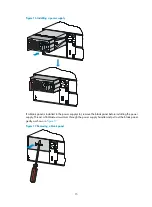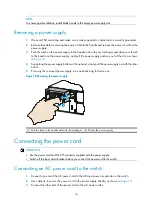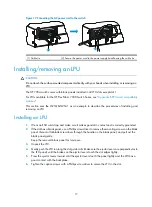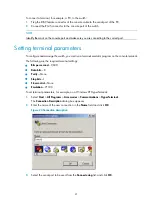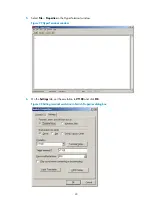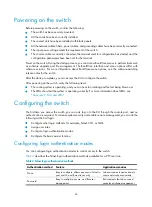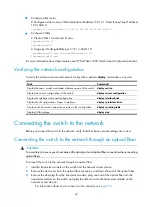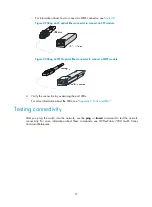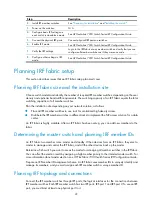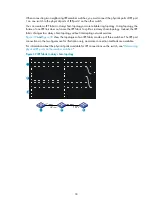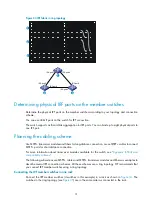
Step Description
2.
Install IRF member switches.
."
3.
Power on the switches.
N/A
4.
Configure basic IRF settings on
each switch in standalone mode. See
HP FlexFabric 7900 Switch Series IRF Configuration Guide
.
5.
Connect the physical IRF ports.
Connect physical IRF ports on switches.
6.
Enable IRF mode.
See
HP FlexFabric 7900 Switch Series IRF Configuration Guide
.
7.
Verify the IRF settings.
Log in to the IRF fabric at any member switch and verify that you can
configure all member switches as if they were one node.
8.
Configure other settings in IRF
mode.
See
HP FlexFabric 7900 Switch Series IRF Configuration Guide
.
Planning IRF fabric setup
This section describes issues that an IRF fabric setup plan must cover.
Planning IRF fabric size and the installation site
Choose switch models and identify the number of required IRF member switches, depending on the user
density and upstream bandwidth requirements. The switching capacity of an IRF fabric equals the total
switching capacities of all member switches.
Plan the installation site depending on your network solution, as follows:
•
Place all IRF member switches in one rack for centralized high-density access.
•
Distribute the IRF member switches in different racks to implement the ToR access solution for a data
center.
An IRF fabric is highly scalable. After an IRF fabric has been set up, you can add new members to the
fabric.
Determining the master switch and planning IRF member IDs
An IRF fabric two member roles: master and standby. When devices form an IRF fabric, they elect a
master to manage and control the IRF fabric, and all the other devices back up the master.
Determine which switch you want to use as the master for managing all member switches in the IRF fabric.
You can affect the election result by assigning a high member priority to the intended master switch. For
more information about master election, see
HP FlexFabric 7900 Switch Series IRF Configuration Guide
.
Prepare an IRF member ID assignment scheme. An IRF fabric uses member IDs to uniquely identify and
manage its members, and you must assign each IRF member switch a unique member ID.
Planning IRF topology and connections
Connect the IRF member switches through IRF ports, the logical interfaces for the connections between
IRF member switches. Each IRF member switch has two IRF ports: IRF-port 1 and IRF-port 2. To use an IRF
port, you must bind at least one physical port to it.
29
Summary of Contents for FlexFabric 7900 Series
Page 5: ...iii Index 53 ...

